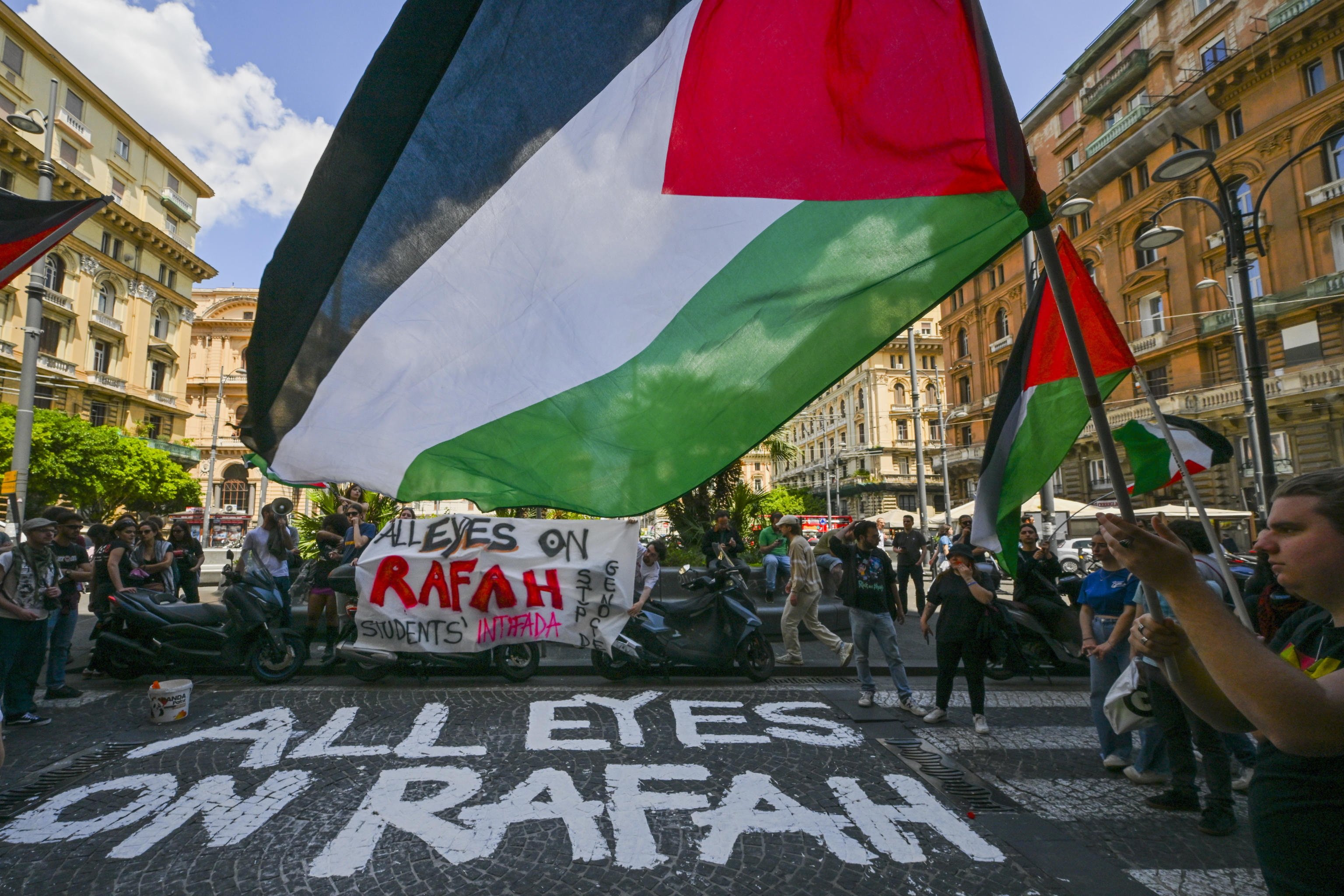Supermodel Bella Hadid, actor Mark Ruffalo, and racing driver Lewis Hamilton, along with around 47 million others, recently shared an image that has taken social media by storm. The image, labelled “All Eyes on Rafah,” was generated by artificial intelligence (AI) and depicts a vast expanse of tent camps for displaced Palestinians, stretching endlessly into the horizon. The phrase overlaying the image, “All Eyes on Rafah,” was inspired by a statement from Dr. Richard “Rik” Peeperkorn, a World Health Organization representative, who remarked that global attention was focused on Rafah during a press conference in February.
This compelling graphic was created by a Malaysian Instagram user known by the handle @shahv4012. The creator has since responded to the viral spread of his image, expressing regret for any dissatisfaction caused. In an Instagram story, he stated, “I apologize if I have made a mistake with the picture and template.”
Table of Contents
Controversy Surrounding the AI-Generated Image
Critics argue that the image oversimplifies and sanitizes the brutal reality of Gaza, overshadowing authentic content from journalists and residents who risk their lives to document the on-ground situation. Actress Rachel Zegler, for instance, voiced her concerns, finding it troubling that an AI-generated image, which does not accurately reflect the dire circumstances faced by Palestinians, garnered more attention and support for the cause.
The internet is inundated with striking images, shareable graphics, and poignant stories of the conflict. So, what made this particular AI-created image go viral, despite its lack of authentic representation?
The Power of Symbolic Imagery in the Digital Age

In today’s digital world, certain images can transcend borders and cultural differences, often becoming symbols of larger social movements. For example, the raised fist icon of the Black Lives Matter movement quickly became a potent symbol of anti-racist efforts, highlighting issues of racial injustice and police brutality beyond the United States.
Such images condense powerful narratives into a single frame, evoking strong emotions such as empathy, outrage, or solidarity. When people come across such compelling content, they are driven to share it, not only to spread the message but also to engage in the broader conversation or movement.
Broader Social and Political Relevance
These impactful images carry significant social and political weight. They incorporate symbols that resonate beyond specific demographics, touching on universal human experiences and values. This wide appeal makes them effective tools for uniting diverse groups around a common cause.
The “All Eyes on Rafah” image uses potent symbols of displacement and desolation. The endless tents stretching into the horizon highlight the harsh conditions faced by people fleeing violence, with only the barest of shelters in a barren landscape.
The Role of AI in Capturing Attention
AI-generated images are particularly adept at capturing our attention. They engage our brain’s pre-attentive processing features, which handle sensory information before our conscious minds begin to focus. Humans are naturally drawn to certain visual elements, such as contrast, colour, and unusual composition, almost instantly.
Generative AI, a cutting-edge branch of AI known for its creative capabilities, often introduces new symbols or reframes existing ones in ways that reflect current sociocultural moods, beliefs, or trends. Unlike human-created images, which might unconsciously reflect the creator’s perspective, AI can pull from a vast and diverse set of inputs, potentially offering a more balanced viewpoint.
Criticisms and Misinterpretations
However, AI’s lack of nuance means its creations can be easily misunderstood. The orderly portrayal of shelters in the “All Eyes on Rafah” image suggests a level of organization and management that does not align with the reality of the Rafah refugee camp. This disconnect has sparked criticism of the image.
People’s reluctance to share graphic and disturbing images on social media influences the creation of more sanitized representations. Sensitivity to graphic content and censorship policies on social platforms may also lead creators to choose less explicit imagery to avoid being filtered.
Generative AI can circumvent censorship by avoiding flagged keywords and creating visually appealing content, facilitating its widespread distribution. Real photos of victims in Gaza and Rafah are often deemed too graphic for social media, allowing sanitized AI-generated images to spread more widely and rapidly.
The Responsibility of Sharing AI-Generated Images
The rise of AI-generated images necessitates a greater sense of responsibility among social media users. While images like “All Eyes on Rafah” can tap into our emotions and resonate widely, their inaccuracies require careful consideration.
Before sharing an AI-generated image, it’s crucial to reflect on whether it accurately represents reality. Just as a small spark can quickly ignite a wildfire, content posted online can go viral in moments. With the power of AI-generated images comes the responsibility to share thoughtfully, ensuring that the images we amplify contribute positively to the global conversation.
The Ethical Use of AI in Media
AI’s ability to create impactful imagery presents both opportunities and challenges. While these images can bring attention to important issues, they can also misrepresent reality. As AI continues to evolve, it’s essential to use this technology ethically, ensuring that it enhances our understanding and awareness of global issues rather than distorting them. By approaching AI-generated content with caution and responsibility, we can harness its power to foster informed and constructive global dialogues.



